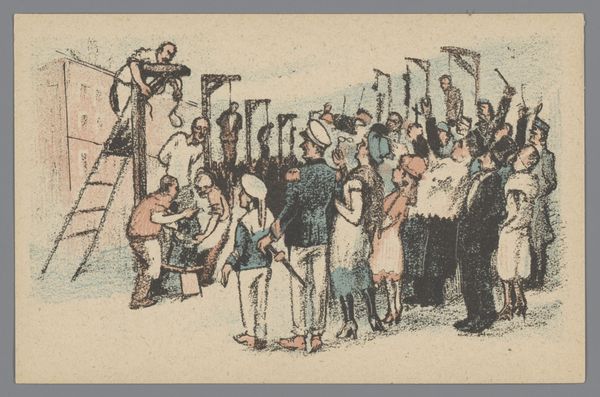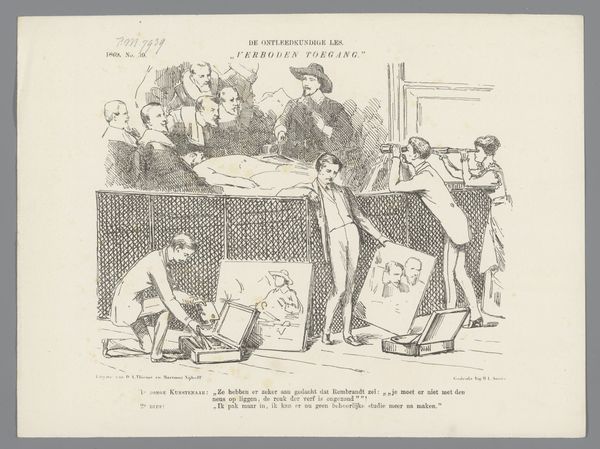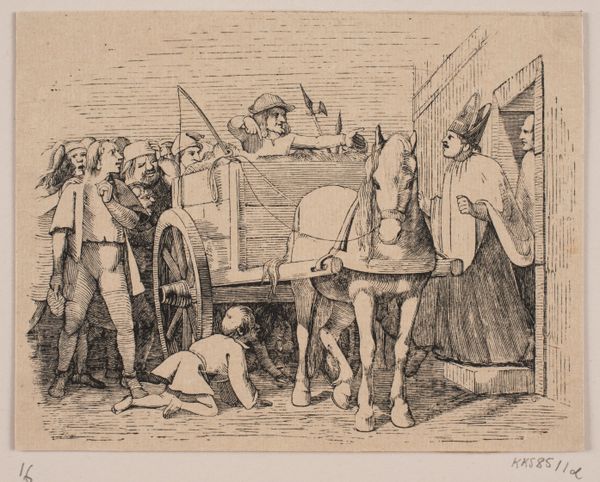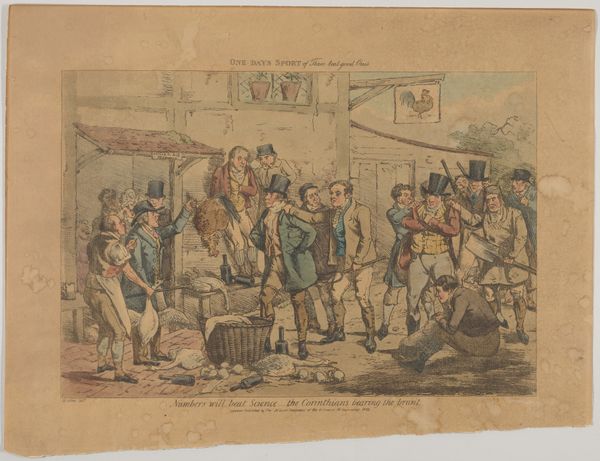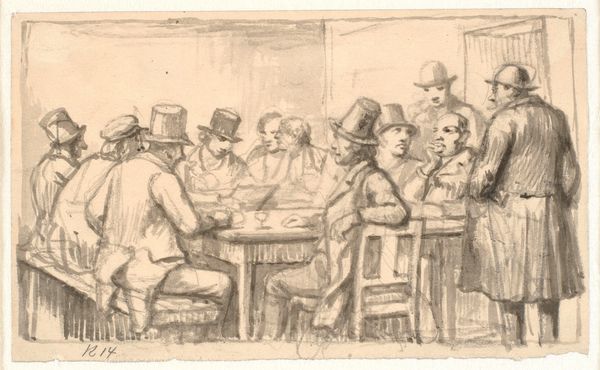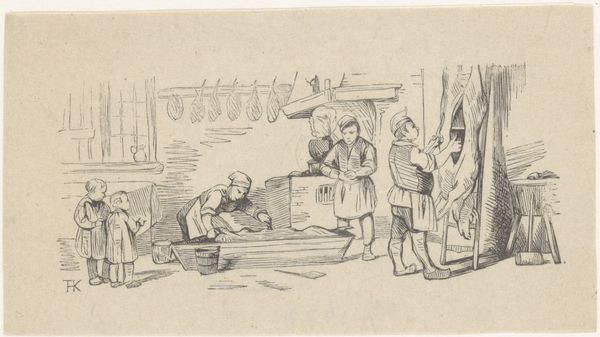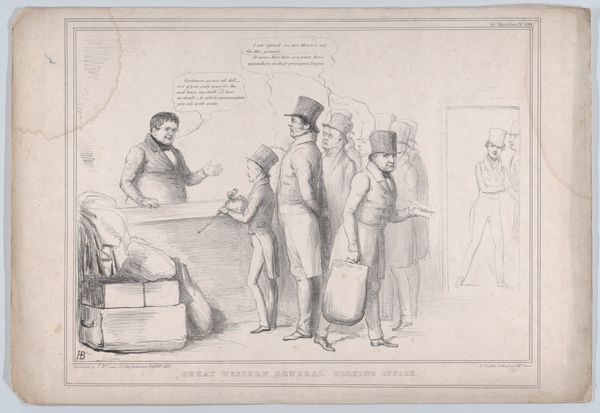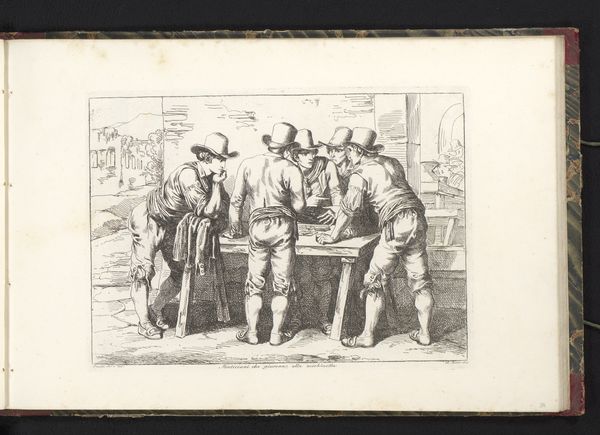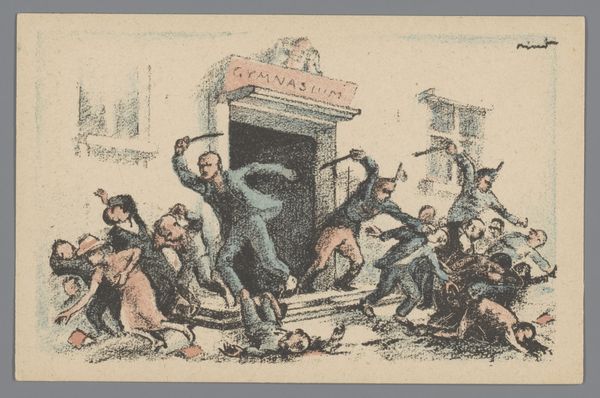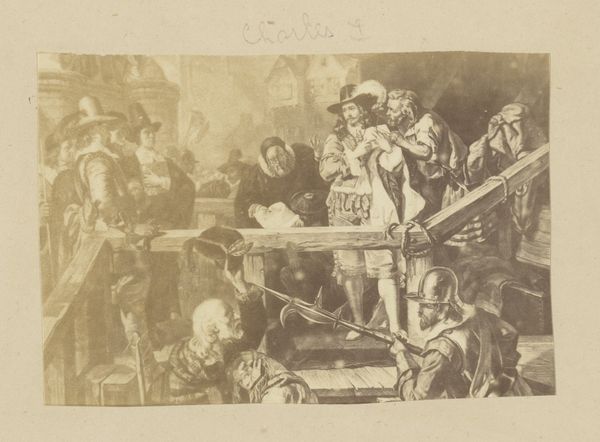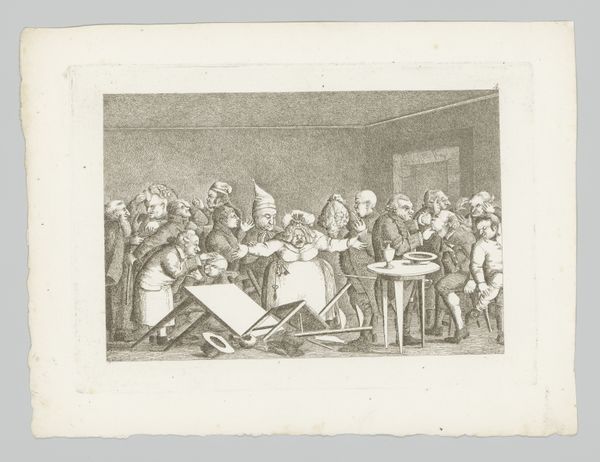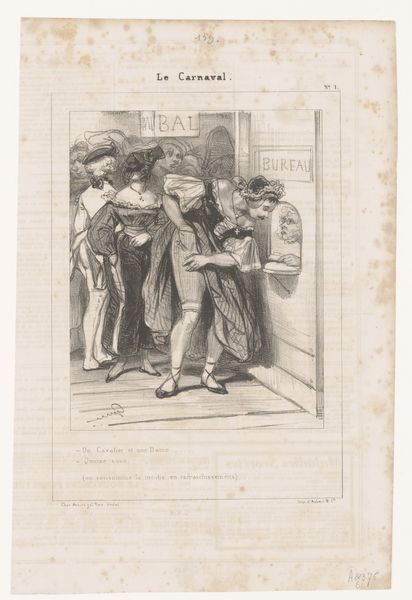
Officier te midden van arbeiders en aan tafel bij hooggeplaatste mannen 1920
0:00
0:00
drawing, paper, ink
#
drawing
#
narrative-art
#
figuration
#
paper
#
social-realism
#
ink
#
modernism
Dimensions: height 90 mm, width 142 mm
Copyright: Rijks Museum: Open Domain
Curator: The immediate tension and division strike me. It’s almost aggressively contrasting. Editor: Indeed. Before us, we have Mihály Biró's drawing from 1920 titled "Officier te midden van arbeiders en aan tafel bij hooggeplaatste mannen," created using ink on paper, part of the Rijksmuseum collection. It embodies social realism within a modern aesthetic, wouldn't you agree? Curator: I do. The dual composition jumps out. On the left, the cramped camaraderie of manual laborers and, juxtaposed, the distant authority of elites, formally arranged around a table. What really stands out is how Biro frames these separate realms using distinct stylistic renderings. The rough energy given to workers and cold precision in the higher room both communicate vastly different production experiences and power dynamics. Editor: Precisely. Looking closely at the application of ink, we observe the rapid, almost agitated strokes that form the laborers’ figures—contrasting the restrained detailing afforded to the officials. It suggests a consciousness of their distinct worlds but are they inherently separated by process? The drawing itself— its materials—bind these realities, this image allows viewers the means to bring them together. Curator: A key component here must be how that table literally forms the only bridge between those social echelons – who produced the commodities being discussed at this table and how does the drawing render them into different modes of existence? And where does this officer fit, is he bound to production, or power? His action appears ambiguous. Editor: I view him as acting a part; see the confident posture, but awkward positioning in respect to the scene as a whole. It presents not necessarily social realism, but staged realism, a performance between modes of social production. The material reality is represented through staged formalism, to illustrate inherent disparities. Curator: It feels undeniably modern and very resonant still, perhaps even more poignantly, today. The artwork leaves one questioning whether these contrasting social dynamics, materially presented are permanent, or inherently transformative through viewing such representations. Editor: A fitting question that prompts critical viewing. Perhaps we’ve touched on the essence of Biro's work and provided an additional layer to perceiving such artworks through social constructs.
Comments
No comments
Be the first to comment and join the conversation on the ultimate creative platform.

